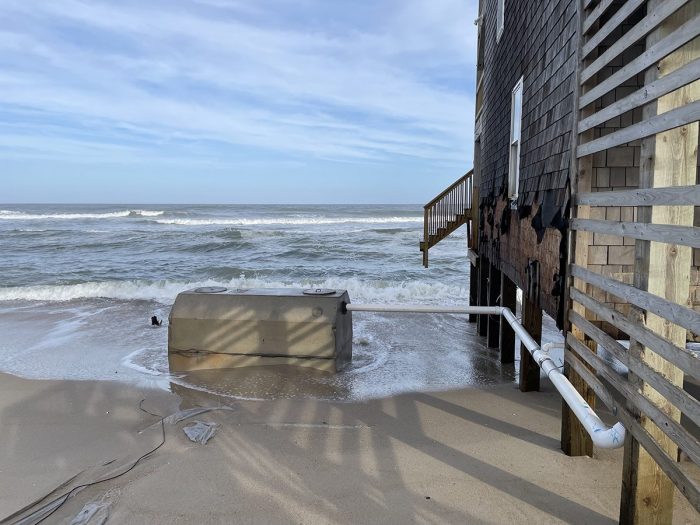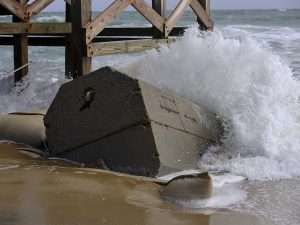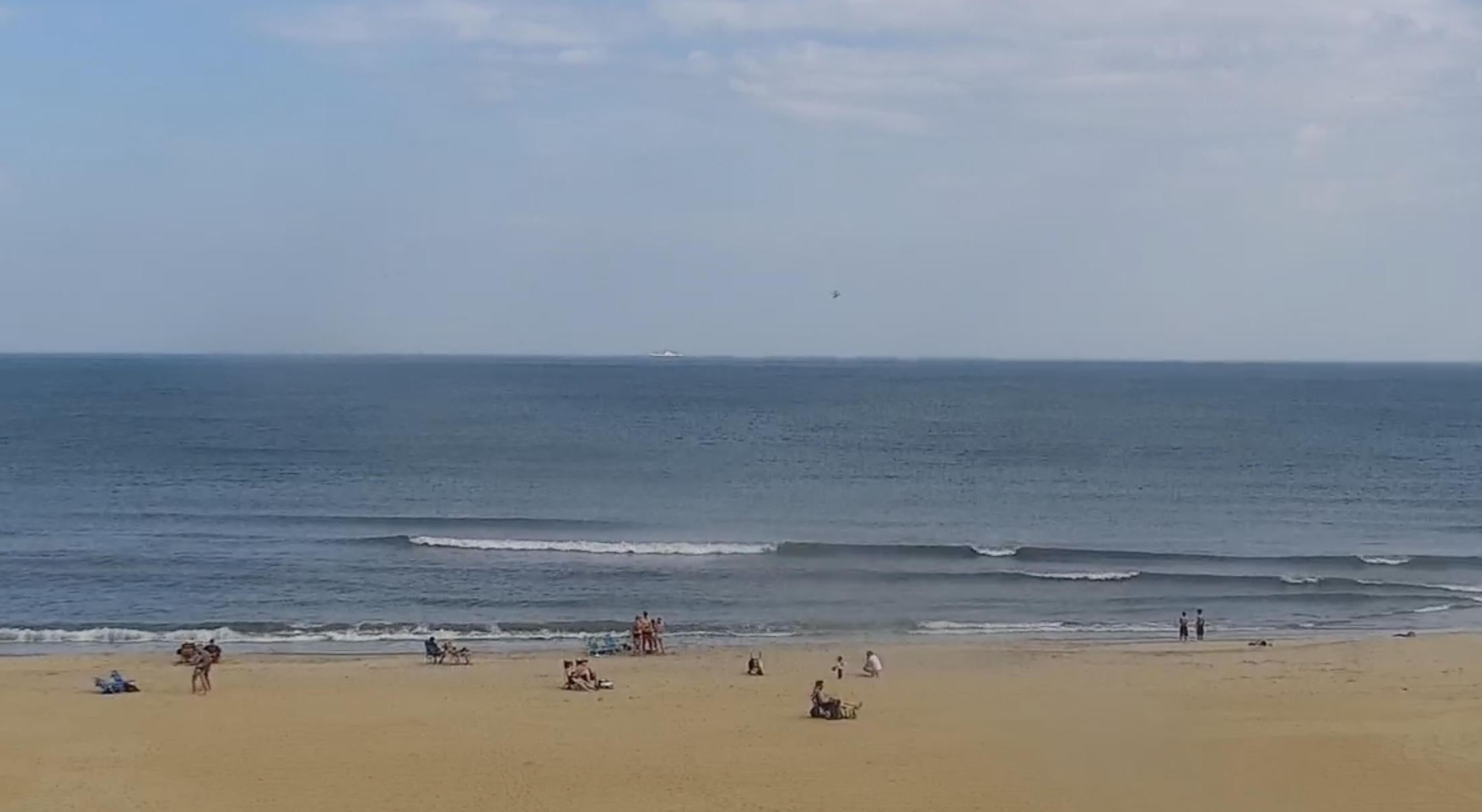
From wobx.com
The North Carolina Coastal Resources Commission will meet on Feb. 23 in Ocean Isle Beach and among the agenda items is a pair of amendments to regulations governing septic tanks on oceanfront properties.
Changes to the rules were drafted in response to sewage spills from three homes that collapsed last year in Rodanthe, and have been discussed at the last two meetings of the 13-member panel.
At their November meeting, the commission chose to delay any action on proposed changes to allow for more public input and to hear from an interagency group that first met last summer.
CoastalReview.org reported the interagency group, made up of state and federal officials and others, is working to address problems stemming from erosion-threatened structures and to discuss proposed rules governing the replacement and relocation of septic systems seaward of the oceanfront vegetation line.

Current policies require that new septic systems are subject to oceanfront construction setbacks, while replacement of an existing system in the same location is usually considered a repair and therefore exempt from Coastal Area Management Act permitting.
“Relocation of an existing system, however, requires a CAMA permit but only requires that the system shall not be relocated oceanward of the primary structure but is not required to be landward of the vegetation line and can be placed on the public trust dry sand beach,” Division of Coastal Management Deputy Director Mike Lopazanski said in a memo to CRC members contained in the agenda packet for the February meeting.
Under state Department of Health and Human Services, Division of Environmental Health rules, new or replacement systems must be 50 feet from mean high water on the oceanfront, while state law does not allow septic tank systems “to be located in areas subject to frequent
flooding unless designed and installed to be watertight and function during a ten-year storm,” Lopazanski noted.
Lopazanski said the division’s staff has proposed two amendments that include allowances for relocation within the oceanfront setback area under certain conditions, and specific provisions for systems relocated with public funds versus non-public funds:
- 7H .0305 – the amendments would clarify that replacement of a septic tank or a subsurface disposal field seaward of the vegetation line or measurement line will require a CAMA permit. This amendment identifies these two components of a septic system as separate structures for repair/replace determinations. If either structure cannot be repaired in place, they will be subject to the replacement/relocation provisions of 7H .0306.
- 7H .0306 – As with other oceanfront structures, new septic tank systems must meet the erosion rate-based setbacks that apply under 0306(a). In addition, under 7H.0306(f), septic tanks and subsurface disposal fields relocated with public funds must meet the applicable ocean hazard setback. If private funds are used, septic tanks and subsurface disposal fields shall not be replaced or relocated within the public trust areas of ocean beaches as defined in G.S. 77-20. Under this statute, Ocean Beaches are defined as “…the area adjacent to the ocean and ocean inlets that is subject to public trust rights. This area is in constant flux due to the action of wind, waves, tides, and storms and includes the wet sand area of the beach that is subject to regular flooding by tides and the dry sand area of the beach that is subject to occasional flooding by tides, including wind tides other than those resulting from a hurricane or tropical storm. The landward extent of the ocean beaches is established by the common law as interpreted and applied by the courts of this State. Natural indicators of the landward extent of the ocean beaches include, but are not limited to, the first line of stable, natural vegetation; the toe of the frontal dune; and the storm trash line.”
“Using this definition will allow the Division to address areas where the siting of septic tanks and subsurface drain fields often become problematic, most notably on the wet sand beach that is subject to regular flooding and the dry sand beach that is subject to irregular flooding,” Lopazanski said.

“It will also allow the Division to make allowances for areas impacted by hurricanes and tropical storms, where septic systems may be damaged by overwash or burial of the vegetation line, but can still be repaired or relocated so as not to affect their function or impact the public trust area,” Lopazanski said.
He noted that a proposal from Division of Coastal Management staff was rescinded that would amend another rule regarding the repair (no CAMA permit required) versus replacement of existing structures (CAMA permit required) based on whether or not the cost to repair exceeds 50% of the market value of a non-water dependent structure.
The Coastal Resources Commission meeting at Ocean Isle Beach Town Hall, 111 Causeway Dr., Ocean Isle Beach, will begin at 9 a.m., and a public comment period is scheduled for 11 a.m. At the chair’s discretion, comments may be limited to 3 minutes per person.
Prior to the commission meeting, the Coastal Resources Advisory Council (CRAC) will meet Feb. 22 at 1 p.m. Following the CRAC meeting, CRAC members, Commissioners, and staff will take a field trip to the terminal groin in Ocean Isle.
Both meetings and the field trip are open to the public.
Other agenda items for the commission meeting include:
- Consideration of variance requests regarding an oceanfront setback and straw bales as sand fencing
- Discussion of Rules Review Commission Objections to Re-adopted Rules;
- Closed session (if necessary), as permissible under GS 143-318.11 (a)(3), to discuss Rules Review Commission Objections to Re-adopted Rules;
- Public hearings for Amendments to 15A NCAC 7B State Guidelines for Land Use Planning – Enforceable Policies; Amendments to 15A NCAC 7K .0207 & 7H .0308 Structural Accessway – Beach Mats and Amendments to 15A NCAC 7M .0600 Floating Structure Policies & 7H .0208 Piers and Docking Facilities – Floating Upweller Systems;
- Consideration of Additional Amendments & Fiscal Analysis for 15A NCAC 07H .0309 and .0310 – Inlet Hazard Areas;
- Online permitting system update;
- Consideration of Approval of Fiscal Analysis – 15A 7H .0305(5) – Proposed Minimum Growing Season for Planted Vegetation and Oceanfront Setback Determinations;
- Consideration of Approval of Fiscal Analysis – General Permits Time Extension.
A full meeting agenda and briefing materials can be found on the CRC website. Times indicated on the agenda for individual items are subject to change.
Posted in GOV, Real Estate, Top Stories, Weather














